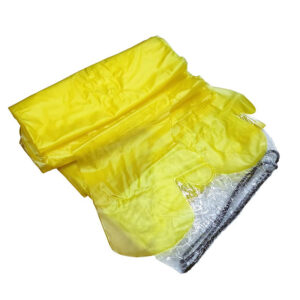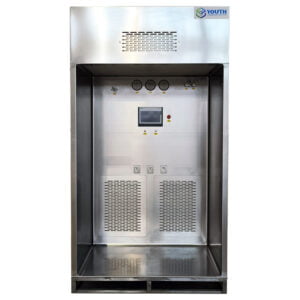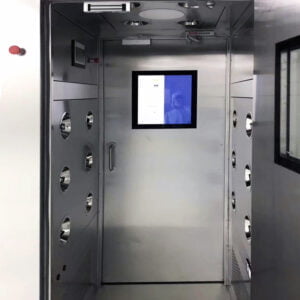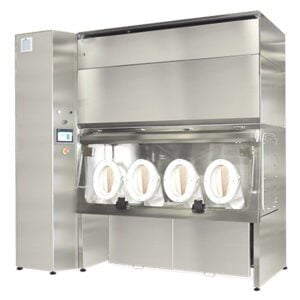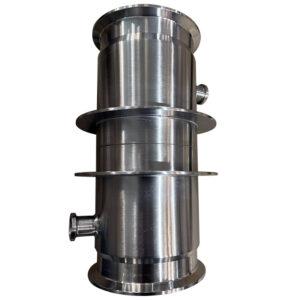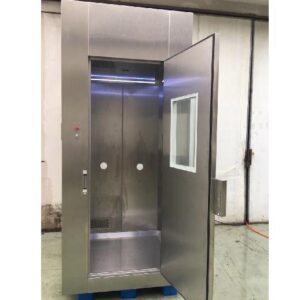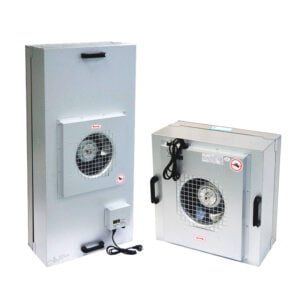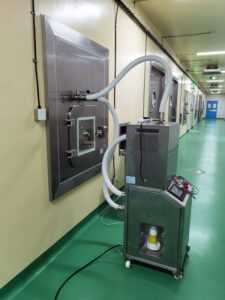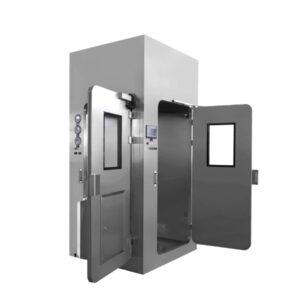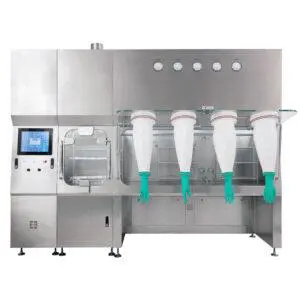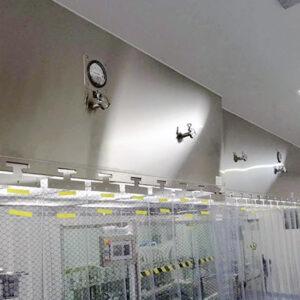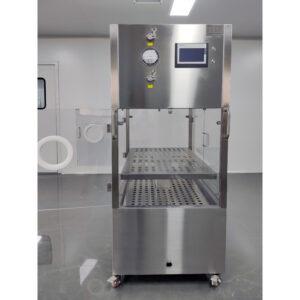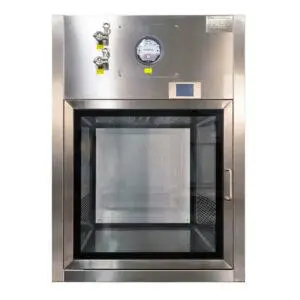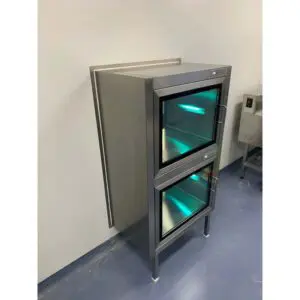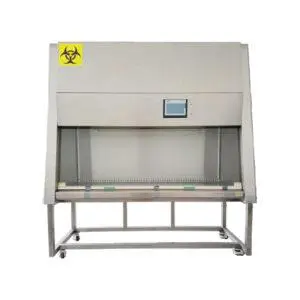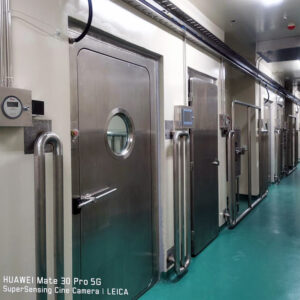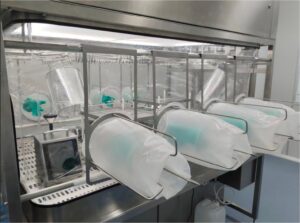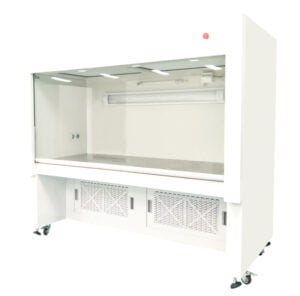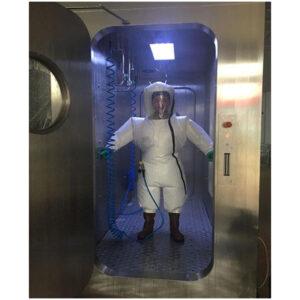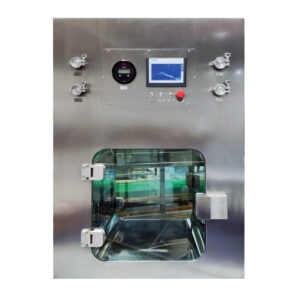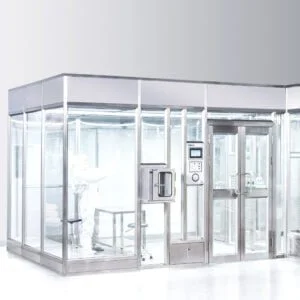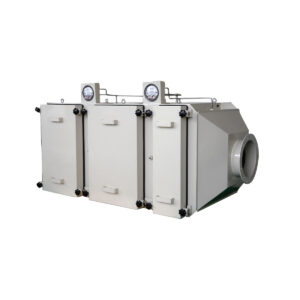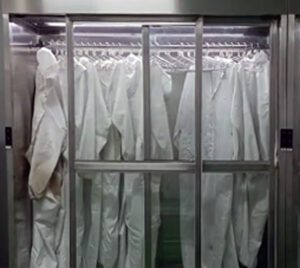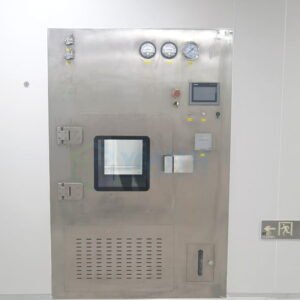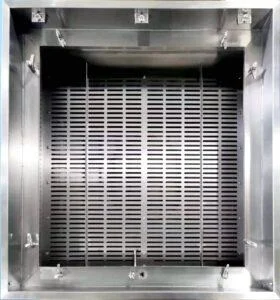In the ever-evolving landscape of pharmaceutical manufacturing, maintaining sterile environments is paramount to ensuring product quality and safety. One technology that has emerged as a game-changer in this field is Vaporized Hydrogen Peroxide (VHP) decontamination. This innovative method has quickly gained traction in pharmaceutical facilities worldwide, offering a range of advantages over traditional decontamination techniques.
VHP decontamination utilizes hydrogen peroxide in its gaseous state to eliminate microorganisms and contaminants from surfaces and equipment. This process has proven to be highly effective, efficient, and versatile, making it an ideal choice for pharmaceutical companies striving to meet stringent regulatory requirements and maintain the highest standards of cleanliness. From its broad-spectrum antimicrobial efficacy to its eco-friendly nature, VHP decontamination is transforming how pharmaceutical facilities approach sterilization and contamination control.
As we delve deeper into the world of VHP decontamination, we'll explore its numerous benefits, applications, and the reasons behind its growing popularity in the pharmaceutical industry. We'll examine how this technology is helping companies improve their production processes, reduce downtime, and ultimately deliver safer, higher-quality products to consumers.
"Vaporized Hydrogen Peroxide decontamination has emerged as a superior method for maintaining sterile environments in pharmaceutical facilities, offering unparalleled efficacy, efficiency, and versatility compared to traditional decontamination techniques."
Before we dive into the specific advantages of VHP decontamination, let's take a look at how it compares to other common decontamination methods used in pharmaceutical facilities:
| Method | Efficacy | Speed | Material Compatibility | Environmental Impact | Residue |
|---|---|---|---|---|---|
| VHP | High | Fast | Excellent | Low | Minimal |
| Chlorine Dioxide | High | Moderate | Good | Moderate | Some |
| Formaldehyde | High | Slow | Good | High | Significant |
| UV Light | Moderate | Fast | Limited | Low | None |
| Heat Sterilization | High | Slow | Limited | Moderate | None |
As we can see from this comparison, VHP stands out in several key areas, particularly in its combination of high efficacy, speed, and material compatibility. Now, let's explore the specific advantages of VHP decontamination in more detail.
What makes VHP decontamination so effective against a wide range of microorganisms?
VHP decontamination has proven to be highly effective against a broad spectrum of microorganisms, including bacteria, viruses, fungi, and spores. This wide-ranging efficacy is one of the primary reasons for its growing adoption in pharmaceutical facilities.
The effectiveness of VHP lies in its ability to penetrate even the smallest crevices and pores, ensuring thorough decontamination of complex surfaces and equipment. The vaporized hydrogen peroxide molecules are small enough to reach areas that traditional liquid disinfectants or other gaseous agents might miss.
"VHP decontamination has demonstrated a 6-log reduction in microbial populations, effectively eliminating 99.9999% of contaminants, including highly resistant bacterial spores."
| Microorganism Type | Log Reduction |
|---|---|
| Bacteria | 6-8 |
| Viruses | 6-8 |
| Fungi | 6-8 |
| Bacterial Spores | 6 |
This level of efficacy is crucial in pharmaceutical environments where even the slightest contamination can have severe consequences. The ability of VHP to effectively eliminate such a wide range of microorganisms ensures that pharmaceutical facilities can maintain the highest standards of cleanliness and product safety.
How does VHP decontamination contribute to improved production efficiency?
One of the most significant advantages of VHP decontamination in pharmaceutical facilities is its ability to enhance production efficiency. This improvement stems from several factors, including faster cycle times, reduced downtime, and increased flexibility in facility operations.
VHP decontamination cycles are typically much shorter than traditional methods like formaldehyde fumigation. While formaldehyde can take up to 12 hours for a complete decontamination cycle, VHP can achieve the same level of sterility in as little as 2-3 hours. This dramatic reduction in cycle time translates directly into increased production capacity and reduced downtime.
"Pharmaceutical facilities implementing VHP decontamination have reported up to a 75% reduction in decontamination cycle times compared to traditional methods, significantly boosting overall production efficiency."
| Decontamination Method | Average Cycle Time |
|---|---|
| VHP | 2-3 hours |
| Formaldehyde | 8-12 hours |
| Chlorine Dioxide | 4-6 hours |
Moreover, the rapid aeration and breakdown of hydrogen peroxide into harmless water and oxygen mean that facilities can quickly resume operations after decontamination. This quick turnaround time is particularly valuable in pharmaceutical manufacturing, where production schedules are often tight and any unnecessary downtime can be costly.
Why is VHP decontamination considered a more environmentally friendly option?
In an era where environmental consciousness is increasingly important, VHP decontamination stands out as a more eco-friendly alternative to traditional decontamination methods. This environmental advantage is one of the key reasons why many pharmaceutical facilities are making the switch to VHP technology.
The primary environmental benefit of VHP decontamination lies in its by-products. When hydrogen peroxide vapor breaks down, it forms only water vapor and oxygen, leaving no harmful residues behind. This clean breakdown is in stark contrast to other decontamination agents like formaldehyde or chlorine dioxide, which can leave toxic residues and require special handling and disposal procedures.
"VHP decontamination produces zero toxic by-products, with hydrogen peroxide breaking down into water vapor and oxygen, making it one of the most environmentally friendly decontamination methods available to pharmaceutical facilities."
| Decontamination Method | By-products | Environmental Impact |
|---|---|---|
| VHP | Water vapor, Oxygen | Minimal |
| Formaldehyde | Toxic residues | High |
| Chlorine Dioxide | Chlorine compounds | Moderate |
Furthermore, VHP systems typically use lower concentrations of the active ingredient compared to liquid-based decontamination methods, reducing the overall chemical footprint of the process. This reduction in chemical usage not only benefits the environment but can also lead to cost savings for pharmaceutical facilities.
How does VHP decontamination enhance safety for facility personnel?
Safety is a paramount concern in pharmaceutical facilities, and VHP decontamination offers significant advantages in this area. The process is inherently safer for facility personnel compared to many traditional decontamination methods, contributing to a healthier work environment.
One of the primary safety benefits of VHP is its low toxicity. While hydrogen peroxide in high concentrations can be harmful, the concentrations used in VHP systems are typically much lower and safer to work with. Additionally, the rapid breakdown of hydrogen peroxide means that any residual vapor quickly dissipates, reducing the risk of long-term exposure.
"Occupational safety studies have shown that VHP decontamination poses significantly lower health risks to facility personnel compared to formaldehyde fumigation, with exposure levels well below permissible limits when proper protocols are followed."
| Decontamination Agent | OSHA Permissible Exposure Limit |
|---|---|
| Hydrogen Peroxide | 1 ppm |
| Formaldehyde | 0.75 ppm |
| Chlorine Dioxide | 0.1 ppm |
Moreover, VHP systems often come equipped with advanced safety features, such as real-time monitoring and automatic shut-off mechanisms, further enhancing personnel safety. These features, combined with proper training and safety protocols, make VHP decontamination a safer option for pharmaceutical facility staff.
What role does VHP decontamination play in regulatory compliance?
In the highly regulated pharmaceutical industry, compliance with stringent quality and safety standards is non-negotiable. VHP decontamination has gained favor among regulatory bodies and pharmaceutical companies alike due to its effectiveness and the robustness of its validation processes.
VHP decontamination aligns well with current Good Manufacturing Practice (cGMP) guidelines and has been recognized by regulatory agencies such as the FDA and EMA as an effective method for maintaining sterile environments. The process is highly repeatable and can be easily validated, which is crucial for meeting regulatory requirements.
"The FDA has acknowledged VHP as an effective sterilization method in its guidance documents, and numerous pharmaceutical companies have successfully incorporated VHP decontamination into their validated cleaning and sterilization processes."
| Regulatory Body | Stance on VHP Decontamination |
|---|---|
| FDA | Recognized as effective |
| EMA | Accepted in validated processes |
| WHO | Recommended for certain applications |
Furthermore, the ability to precisely control and monitor VHP concentration, temperature, and humidity throughout the decontamination cycle provides a high degree of process control. This level of control not only ensures consistent results but also generates comprehensive data for regulatory documentation, simplifying the audit process.
How does VHP decontamination contribute to material compatibility and equipment longevity?
One of the often-overlooked advantages of VHP decontamination is its excellent material compatibility. This characteristic is particularly valuable in pharmaceutical facilities, where sensitive and expensive equipment is commonplace.
VHP is gentle on a wide range of materials, including metals, plastics, and electronics. Unlike some harsher decontamination methods, VHP doesn't cause corrosion, discoloration, or degradation of most materials used in pharmaceutical manufacturing equipment. This compatibility not only helps maintain the integrity of the equipment but also contributes to its longevity.
"Studies have shown that repeated exposure to VHP decontamination cycles causes significantly less material degradation compared to other methods like chlorine dioxide or formaldehyde, potentially extending the lifespan of sensitive pharmaceutical equipment by up to 30%."
| Material | Compatibility with VHP |
|---|---|
| Stainless Steel | Excellent |
| Aluminum | Good |
| Most Plastics | Good to Excellent |
| Electronics | Good (when sealed) |
The non-corrosive nature of VHP also means that it can be used to decontaminate a wider range of equipment and areas within a facility. This versatility can lead to more comprehensive and efficient decontamination processes, further enhancing the overall cleanliness and sterility of pharmaceutical manufacturing environments.
What advantages does VHP offer in terms of process flexibility and adaptability?
In the dynamic world of pharmaceutical manufacturing, flexibility and adaptability are crucial. VHP decontamination shines in this regard, offering a level of versatility that is hard to match with traditional decontamination methods.
VHP systems can be easily scaled to accommodate various room sizes and configurations. From small isolators and glove boxes to entire cleanrooms and production areas, VHP can be effectively deployed across a wide range of applications. This scalability allows pharmaceutical facilities to implement a consistent decontamination method throughout their operations, simplifying protocols and training.
"The adaptability of VHP systems has enabled pharmaceutical companies to reduce their decontamination method types by up to 50%, streamlining processes and significantly reducing complexity in facility operations."
| Application | VHP Suitability |
|---|---|
| Isolators | Excellent |
| Cleanrooms | Excellent |
| Production Areas | Good to Excellent |
| Pass-through Chambers | Excellent |
Additionally, VHP cycles can be easily customized to meet specific decontamination requirements. Parameters such as hydrogen peroxide concentration, exposure time, and humidity can be adjusted to optimize the process for different scenarios. This flexibility allows pharmaceutical facilities to tailor their decontamination protocols to specific products, equipment, or regulatory requirements.
How does VHP decontamination impact overall cost-effectiveness in pharmaceutical facilities?
While the initial investment in VHP decontamination systems may be higher than some traditional methods, the long-term cost-effectiveness of this technology is compelling for many pharmaceutical facilities. Several factors contribute to the overall economic benefits of VHP decontamination.
Firstly, the shorter cycle times of VHP decontamination lead to reduced downtime and increased production capacity. This efficiency can translate directly into higher output and revenue for pharmaceutical facilities. Additionally, the lower chemical usage and minimal waste generation of VHP systems can result in significant savings on consumables and waste disposal costs.
"A cost analysis conducted by a major pharmaceutical manufacturer revealed that switching to VHP decontamination resulted in a 15% reduction in annual decontamination-related costs, with the initial investment being recouped within two years of implementation."
| Cost Factor | Impact of VHP |
|---|---|
| Downtime | Reduced by 50-75% |
| Chemical Usage | Reduced by 30-50% |
| Waste Disposal | Minimal |
| Equipment Longevity | Increased by up to 30% |
Moreover, the excellent material compatibility of VHP can lead to reduced equipment replacement costs over time. The non-corrosive nature of the process helps extend the lifespan of expensive pharmaceutical manufacturing equipment, providing additional long-term cost savings.
In conclusion, Vaporized Hydrogen Peroxide decontamination has emerged as a powerful tool in the arsenal of pharmaceutical facilities striving for excellence in sterility and contamination control. Its broad-spectrum efficacy, rapid cycle times, and excellent material compatibility make it an ideal choice for maintaining the highest standards of cleanliness in pharmaceutical manufacturing environments.
The advantages of VHP decontamination extend beyond its primary function of eliminating microorganisms. From improved production efficiency and enhanced safety for facility personnel to better regulatory compliance and long-term cost-effectiveness, VHP technology offers a comprehensive solution to many of the challenges faced by modern pharmaceutical facilities.
As the industry continues to evolve and face new challenges, innovative technologies like VHP decontamination will play an increasingly crucial role in ensuring the safety and quality of pharmaceutical products. By embracing these advancements, pharmaceutical companies can not only meet current regulatory requirements but also position themselves at the forefront of manufacturing excellence.
The YOUTH portable decontamination VHP generator unit is an excellent example of how this technology is being made more accessible and adaptable for various pharmaceutical applications. With its compact design and powerful performance, it represents the next generation of VHP decontamination solutions, enabling pharmaceutical facilities of all sizes to harness the benefits of this revolutionary technology.
As we look to the future, it's clear that VHP decontamination will continue to play a pivotal role in shaping the landscape of pharmaceutical manufacturing, driving improvements in product quality, operational efficiency, and environmental sustainability.
External Resources
Vaporized Hydrogen Peroxide: The Future of Decontamination – This article discusses the advantages of Vaporized Hydrogen Peroxide (VHP) systems, including their broad-spectrum efficacy, material compatibility, and ability to decontaminate large areas quickly. It highlights their use in healthcare and pharmaceutical facilities.
The Advantages of Decontaminating with Vapor Hydrogen Peroxide – This technical tip outlines the benefits of VHP, such as its efficacy against a wide range of microorganisms, low temperature processing, short cycle times, and lower investment and operating costs. It also emphasizes the safety and environmental friendliness of the process.
Vaporized Hydrogen Peroxide (VHP) Biodecontamination – This article focuses on the regulatory compliance and validation advantages of VHP in biodecontamination, particularly in pharmaceutical and life sciences industries. It highlights VHP's robust validation processes and its acceptance by regulatory bodies like the EPA and ECHA.
Vapour-phase Hydrogen Peroxide Systems – This resource details the applications of VHP systems in facility and equipment decontamination, including cleanrooms and hospitals. It discusses the advantages such as low chemical usage, environmental friendliness, and the ability to target hard-to-reach areas.
Vaporized Hydrogen Peroxide (VHP) sterilization – This white paper from Stryker explores the advantages of VHP sterilization, including its efficacy, material compatibility, and low-temperature processing. It also discusses the historical development and practical applications of VHP technology.
VHP Decontamination in Pharmaceutical Facilities – Although not directly linked, this resource can be found through a search and provides insights into how VHP is used in pharmaceutical facilities, emphasizing its effectiveness in maintaining sterile environments and complying with regulatory standards.
Hydrogen Peroxide Vapor for Decontamination – This article discusses the use of hydrogen peroxide vapor for decontamination in pharmaceutical settings, highlighting its advantages over traditional methods, such as better coverage and reduced risk of damage to equipment.
VHP Biodecontamination: A Guide for Pharmaceutical Manufacturers – This guide from ISPE provides a comprehensive overview of VHP biodecontamination, including its principles, applications, and validation processes, which are crucial for pharmaceutical manufacturers to ensure compliance and efficacy.
Related Contents:
- Vaporized Hydrogen Peroxide vs Traditional Sterilization: A Comprehensive Analysis
- Vaporized Hydrogen Peroxide: The Future of Decontamination
- Vaporized Hydrogen Peroxide: Advanced Decontamination Technology
- Revolutionizing Cleanroom Sterilization: VHP Distribution Systems
- Regulatory Compliance for VHP Sterilization in Pharmaceutical Manufacturing
- Vaporized Hydrogen Peroxide: A Powerful Sterilization Solution
- Vaporized Hydrogen Peroxide Sterilization: Principles and Applications
- VHP Generator: Advanced Decontamination Technology
- STERIS VHP Generators: Advanced Decontamination Solutions


